3 Days in Barcelona
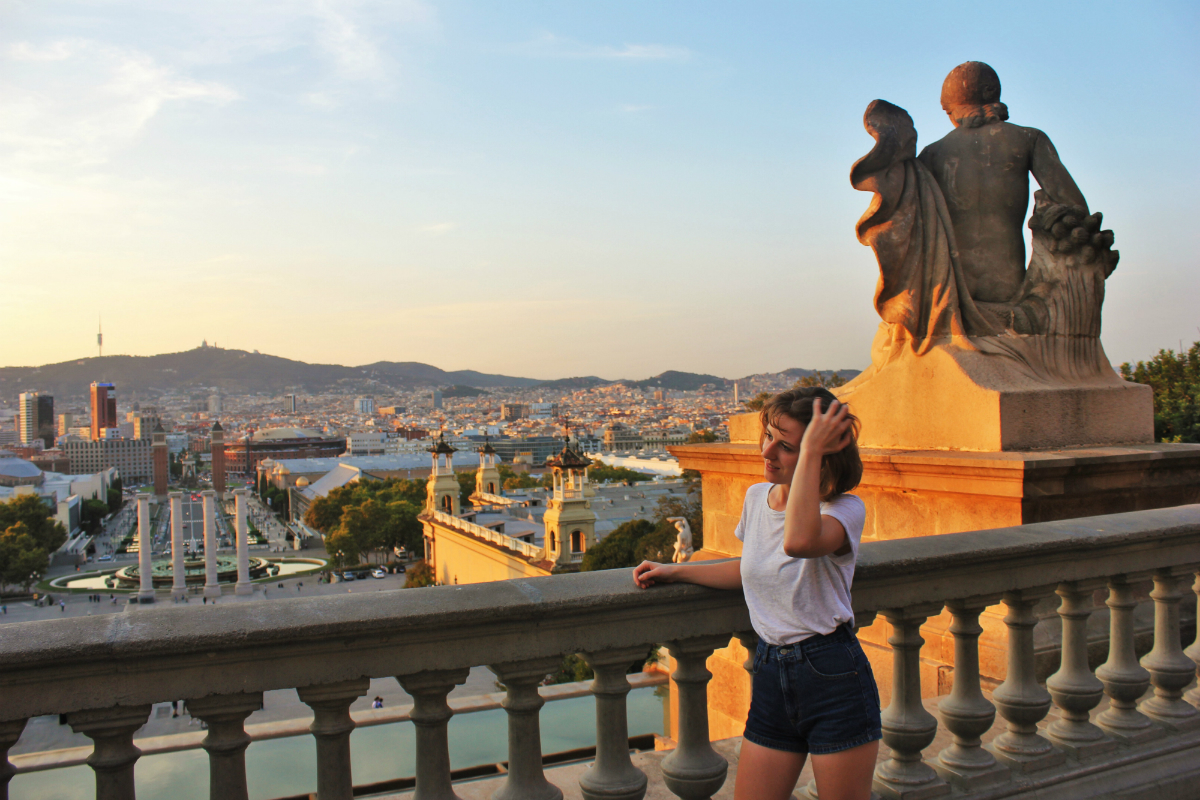
Barcelona, Spain’s coolest city, is a vibrant blend of modernist and Gothic architecture, rich Catalonian history, and lively street culture. Whether you’re a history buff, a foodie, or a beach lover, this three-day itinerary will help you make the most of your time in the city.
Updated for 2025 — We first wrote this blog in 2015, after spending a few blissful weeks living in Barcelona’s El Born neighbourhood. Since then, tourism in Barcelona has become increasingly controversial. We’ve personally always found the locals to be welcoming, warm-hearted, and tolerant of visitors.
Day 1: Iconic Barcelona
Morning 1: Walking Tours of Barcelona
A walking tour is an excellent way to get to know the streets of the city. They come in different flavours depending on your interests; the civil war tour was my favourite! If you are thinking of doing a walking tour, you will get more out of the experience by doing one on your first or second day in Barcelona, as they are usually aimed at people who have just arrived in the city.
Free Walking Tours – There are many free walking tours in Barcelona that cover the best of Barcelona’s attractions. Tours leave daily and coke in a variety of flavours, including Gaudi tours and tours of the Ravel neighbourhood. Learn more at Free Walking Tours Barcelona.
Spanish Civil War Tour – If history is your passion, then follow in the footsteps of George Orwell and retrace how resistance to Franco and fascism led to bloodshed and bullet holes on the streets of Barcelona. Prices from €39 per person, book with Get Your Guide.
Hidden City Walking Tours – This award-winning walking tour company is a social enterprise that employs guides who were previously homeless. The classic tours include both traditional churches and favourite tourist stops, but also delves into societal issues like homelessness, prostitution and poverty. Prices are from €15.25 per person, book with Hidden City Walking Tours.
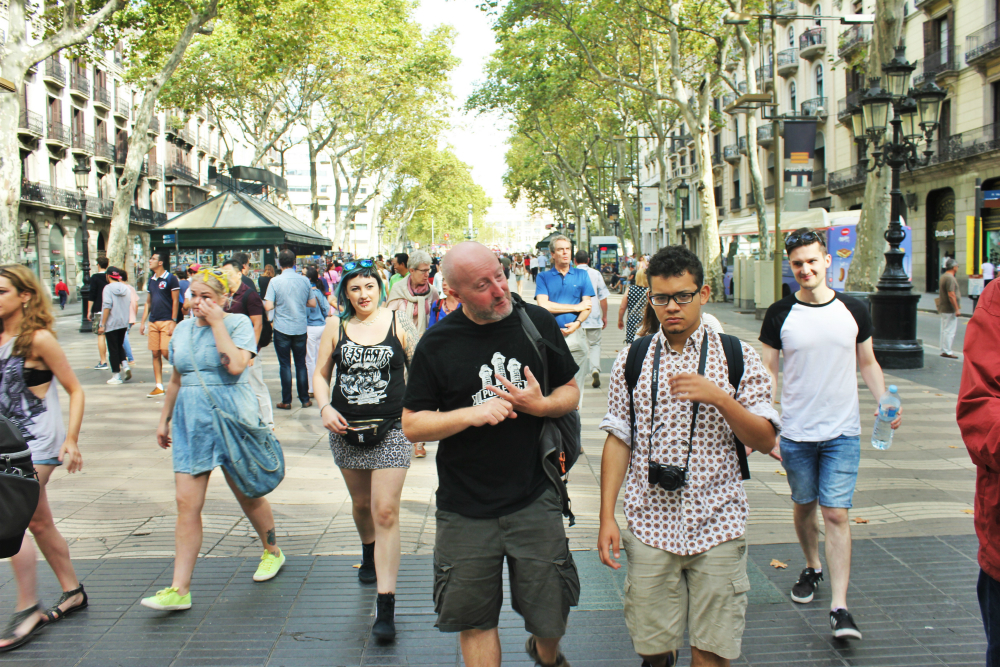
Afternoon: La Sagrada Familia
If you’re going to see any of the famous sights, then this is the one to choose. Antoni Gaudi left his masterpiece unfinished when he was killed in a tram accident. The completion date is scheduled for 2026, more than 140 years after work first started. Tours available via Get Your Guide from €28.60.
Evening: Visit Las Ramblas & Barceloneta Beach
A close friend of ours, a Barcelona local, recently admitted that she had been to Barcelona beach perhaps only once or twice in her life. “It’s a tourist beach!” she explained. “Nobody who goes there actually lives in Barcelona.” After visiting the beach in August, I can see why: it is crowded and very hot. Having said that, you may want to visit the beach and Las Ramblas once, just to tick them off the bucket list.
Day 2: Green Barcelona
Morning: Wander Around Parque Guell
Another of Gaudi’s gifts to the people of Barcelona, Park Guell is a green space designed by the master of modernism himself. Non-local visitors normally have to buy a ticket, but concessions and free days are available, so check the park’s official website for more information.
The closest Metro stations are Vallcarca and Lesseps, with the park being about a five minute walk from either. We recommend visiting early in the day to avoid the worst of the crowds.
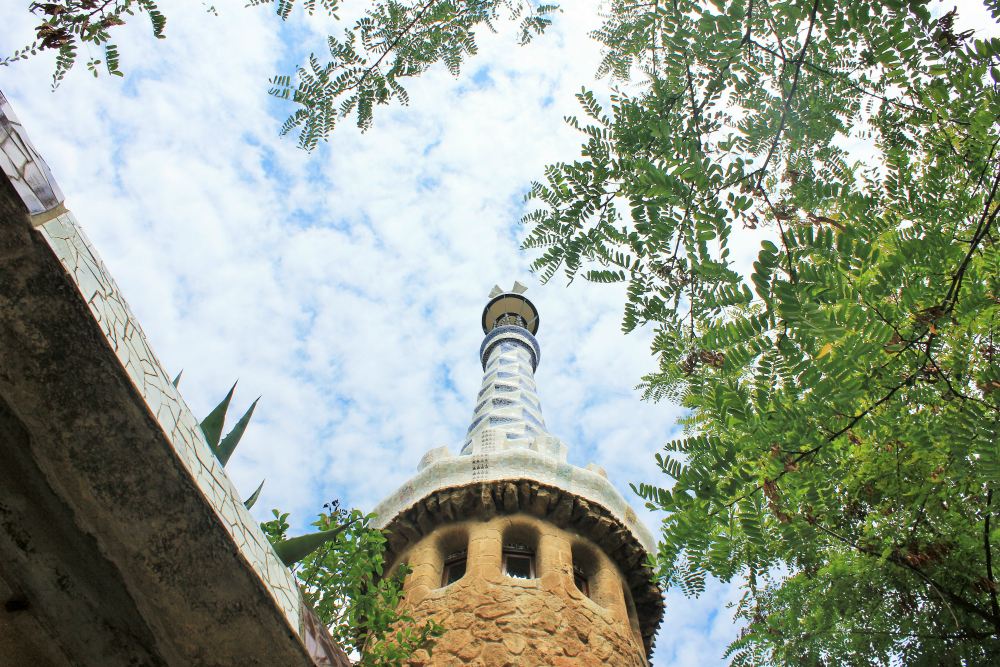
Afternoon: Hike Carretera de les Aigües
This 10km track through the hills overlooking the city is a favourite with fitness fans who run and cycle through the intense heat in their quest for health and the perfect body.
To get there, take the FCG from Placa de Catalunya to the station called ‘Peu de Funicular.’ From here you can take a funicular up to the carretera de les aigues (first stop). If you walk north east along the carretera, you’ll eventually find yourself at a car park which leads to a bus station which will take you back to the FCG.
Evening: Take in the Views from Tibidabo
Tibidabo, the highest hill in Barcelona, offers breathtaking panoramic views of the city. Home to the stunning Sagrat Cor church and a historic amusement park, it’s a perfect spot for sunset. Take the funicular or hike up for a rewarding experience away from the crowds.
Night: Dinner & Drinks in Gràcia
Escape the tourist crowds and head to Gràcia, a neighborhood with a bohemian spirit and a lively local scene. Start your evening with dinner at La Pubilla (seasonal Catalan cuisine, €€). Afterward, enjoy Heliogàbal, a small but legendary venue for live music and indie vibes.
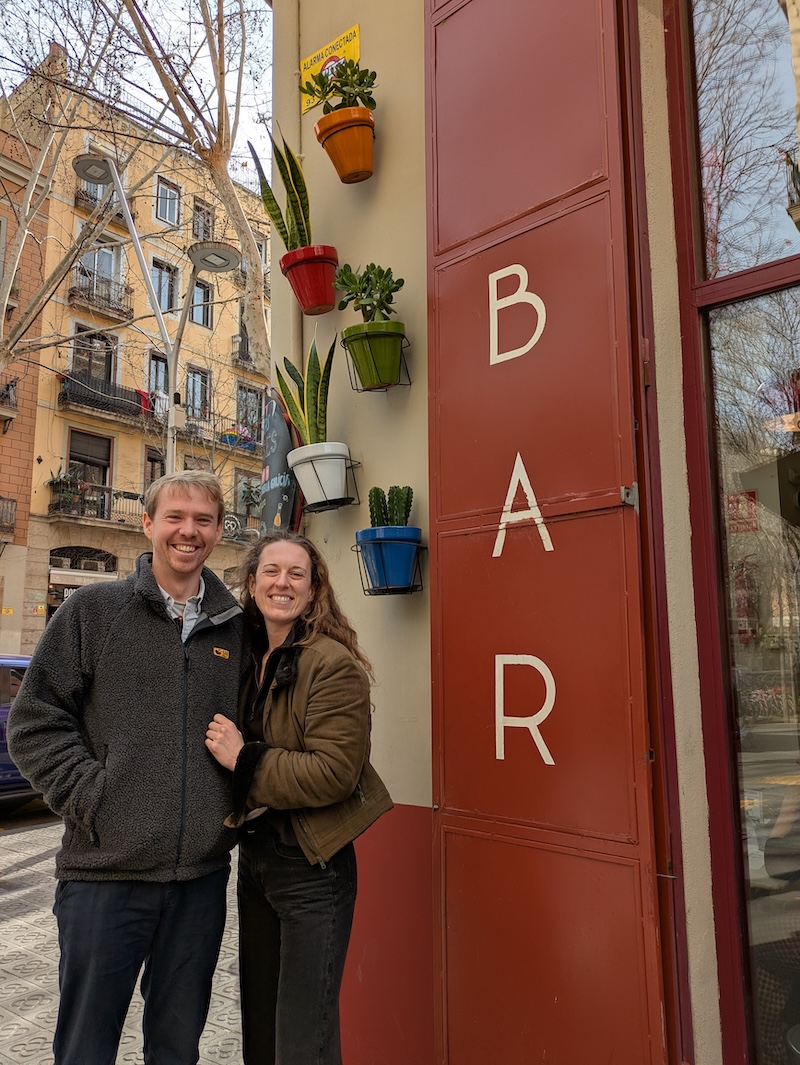
Day 3: Views, Art & Culture
Morning: Check out the Contemporary Art Museum of Barcelona (MACBA)
An eclectic collection of modern art makes for an intriguing visit to the Contemporary Art Museum of Barcelona. Exhibitions change every three to four months, but you can expect thought provoking pieces every time. The plaza outside the building has become an unofficial meeting point for a tribe of skateboarders that make for great people-watching in their own right. Grab lunch after the museum at Flax&Kale (healthy rooftop dining, €€)
Midday: Explore Castell de Montjuic
Montjuic, a great green hill by the sea, is a welcome relief for the city-sick traveller. Atop the hill is the Castell de Montjuic, a fort with imperious views of the city below. You can get to Montjuic by taking the Metro to Paral-lel, then taking the Funicular towards the Castell (both are covered by one ticket). From here you can walk up the hillside if the heat isn’t too heavy. The Castell is best at sunset, when the heat is diminished and the light is photogenic.
Afternoon: See the Sunset from the Museu Nacional d’Art de Catalunya
The steps of the palatial Museu Nacional d’Art de Catalunya (National Museum of Catalan Art) are a popular place from which to enjoy the sunset. You can reach the museum either by walking through the botanical gardens from Montjuic or by taking the Metro to Plaza de España. The old bull-fighting ring, now repurposed as a shopping centre, is also worth a visit for its views of the city.
Evening: Authentic Dinner & Drinks in Sants
Sants offers a more down-to-earth, local vibe compared to the city’s tourist hotspots. It’s a neighborhood of traditional bodegas, family-run restaurants, and a strong community spirit. Start with dinner at La Mundana (modern Catalan fusion, €€€) or Kop de Mà (punk tortilla, €). Afterward, head to Can Vies, a community-run bar and cultural space where locals gather for drinks, live music, and events (cash only).
Got an Extra Day?
Day Trip to Montserrat
If you have an extra day in Barcelona, a trip to Montserrat is a must.
Just an hour by train from Plaça d’Espanya, Montserrat is a striking mountain range with jagged peaks and a Benedictine monastery nestled high among them. The monastery, Santa Maria de Montserrat, is home to the Black Madonna, a revered religious icon, and offers sweeping views of the surrounding countryside.
Montserrat is a great place for a day hike. There are several well-marked trails with beautiful viewpoints and quiet chapels hidden in the hills.

Practical Tips for Visiting Barcelona
Tourist Traps: Be very careful eating around Las Ramblas and on the seafront — meals can cost twice the usual price and taste half as good.
Accommodation in Barcelona
Many locals of Barcelona complain that tourism has driven up the price of housing, making it unaffordable. In response, the local government plans to ban short-term lets like Airbnb (ban expected 2029). It also plans to double the tourist tax (currently €6.27 per person per night).
We stayed at Hotel Villa Emilia in Barcelona, a four-star hotel near San Antoni, which we highly recommend. The staff were friendly and our room was clean and spacious. We paid €297 for a double room for two nights (not including tourist tax).
How to Get Around in Barcelona
Safe, reliable and reasonably priced, Barcelona has a great public transport system. Both buses and the Metro are covered by the same ticket. Consider buying a 2-day travel card for €18.10 if you plan to use the Metro a lot.
Get to Barcelona Airport
Barcelona Airport is very accessible from the city, just 20 to 30 minutes by car or 30 to 40 minutes by public transport (from Plaza España). Here are the prices of airport transport:
- A Metro Airport ticket is €5.7o
- The Aerobus is €7.45
- A taxi is around €35
Responsible Tourism in Barcelona
Can Barcelona both be liveable for locals and open to visitors? The tension has certainly grown in the last ten years, especially as the cost of living grows for locals even as record numbers of tourists arrive. Here are some things to consider if you choose to visit Barcelona:
- Does it need to be Barcelona? Spain is full of incredible cities, many of which would love to have more tourists.
- Can you visit outside of the peak summer months to ease overcrowding? (The summer is too hot anyway!)
- Can you avoid the most crowded parts of the city, such as Las Ramblas and Born?
- Can you spend some of your time learning about Catalan culture?
- Can you spend some of your money in places designed for local people, not just for tourists?
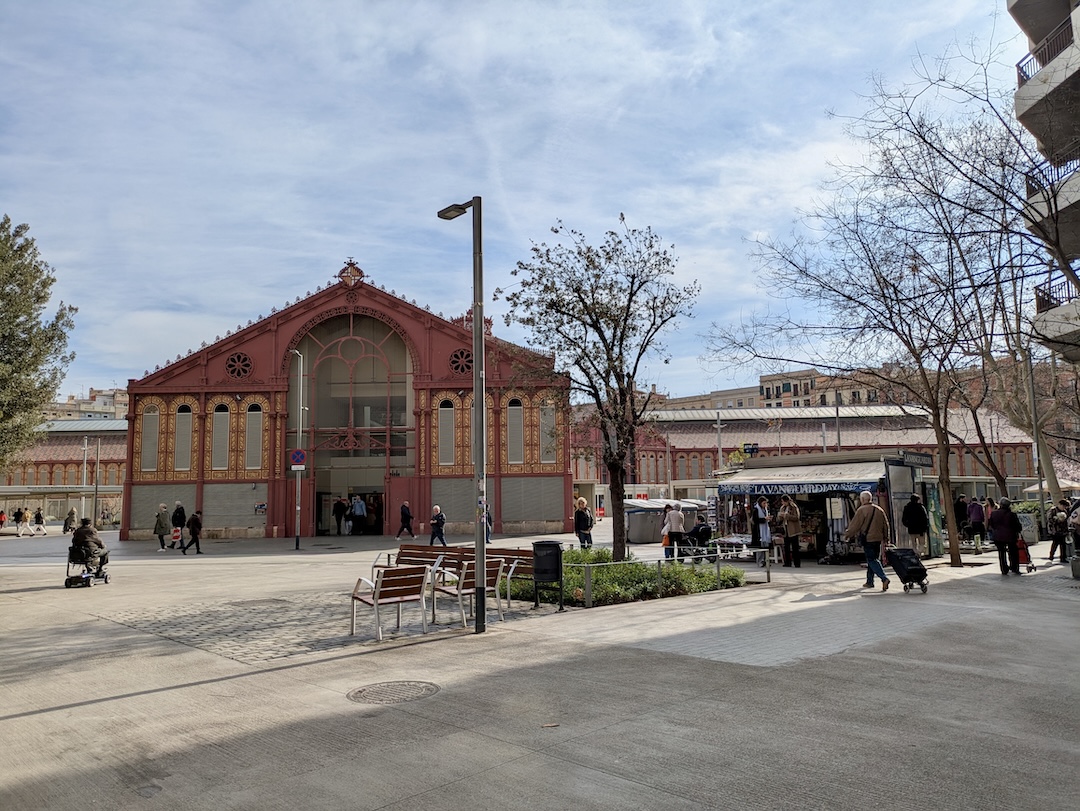
Is Barcelona Safe for Tourists?
Barcelona has a bad reputation for petty crime, mainly pickpocketing, but muggings also happen. That being said, the closest we’ve come to experiencing crime in any of our visits is when a police officer told us we were being tailed by a pickpocket. I have also always felt safe in Barcelona, even when out at night. To avoid trouble, consider:
- Avoiding areas where pickpockets are common, like Las Ramblas,
- Making sure valuables are in zipped pockets on your front,
- Avoid drinking to the point of being an easy target,
- Don’t keep all your valuables in one bag (split up cash and keep a backup card somewhere safe).
Barcelona’s charm lies beyond its famous landmarks. Explore local neighborhoods, support community-run spaces, and embrace Catalan culture for a deeper experience. By avoiding tourist traps and visiting responsibly, you’ll discover a more authentic, rewarding side of the city.
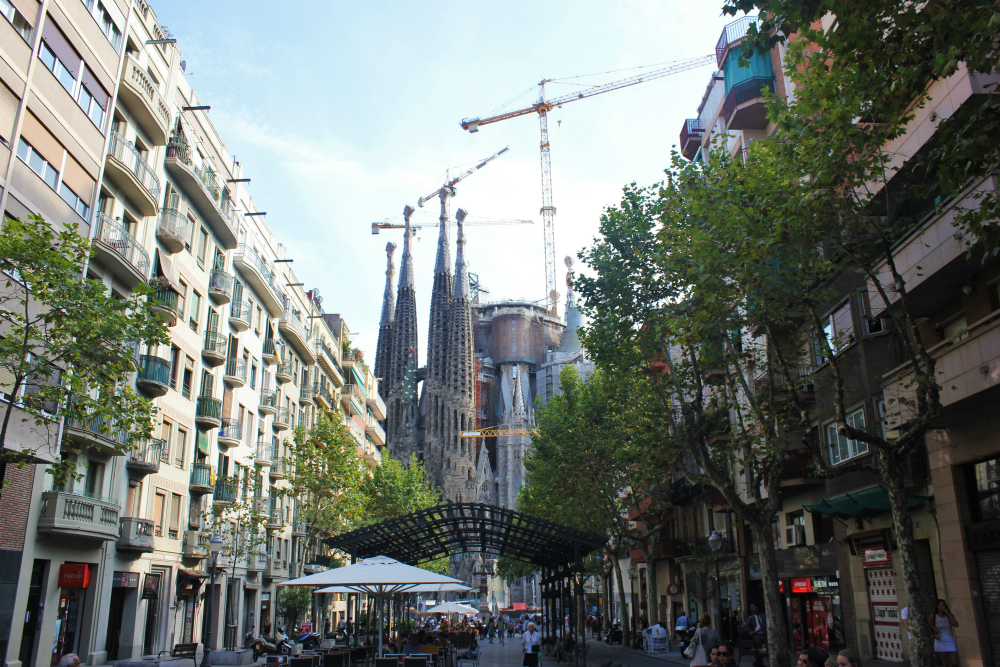
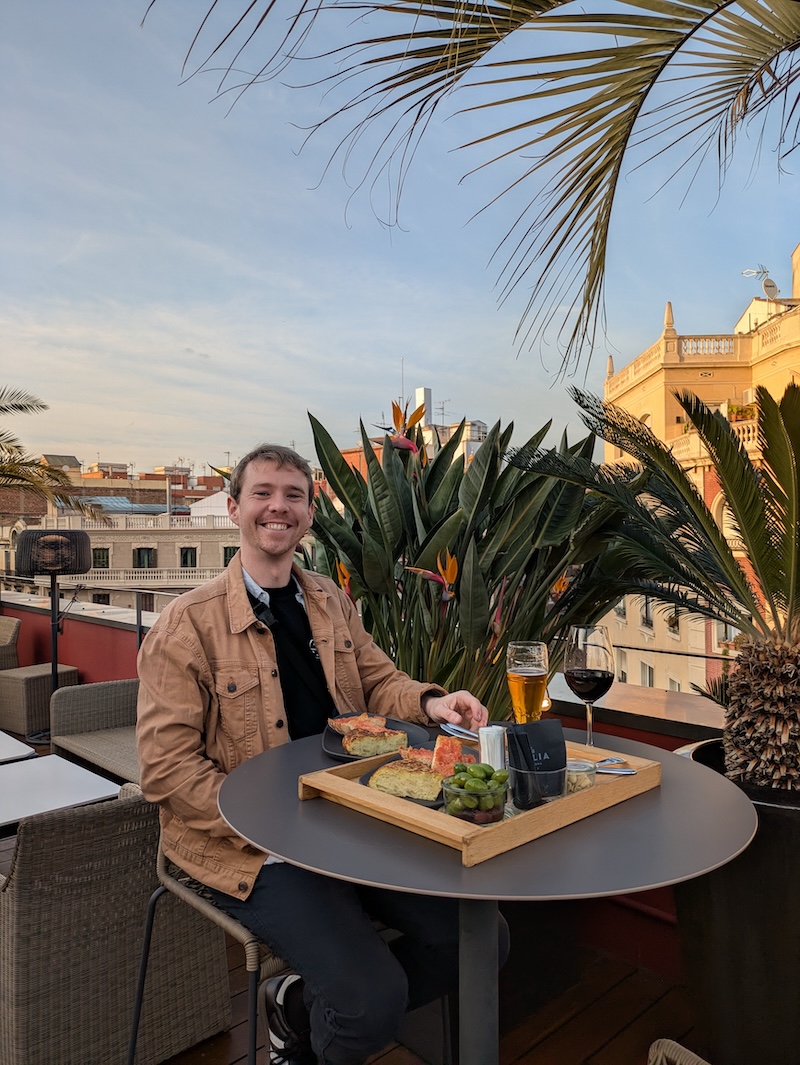
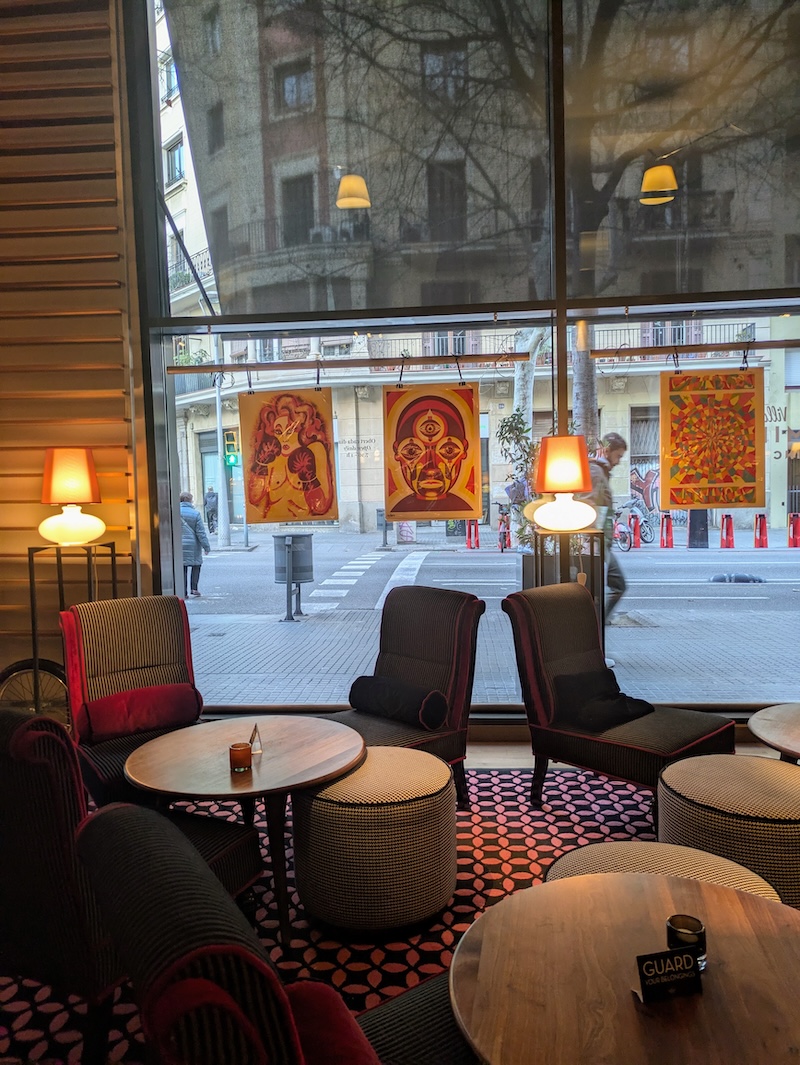
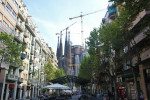




Jesper
Great guide..! Having been here quite often before I’ve now finally taken the decision to live here. Will definitely check out the castle of Montjuic and the food at la bascula! Love from here!
Charlie on Travel
That’s awesome, Jesper! Do you have any recommendations that I didn’t includein my guide?
Hope you enjoy Montjuic :)
Maël
Great guide about Barcelona !
The funny point for me is that I went to Barcelona one day before your post :O
Charlie on Travel
Thanks Mael! Oh, did you?? How long were you (or are you) in Barcelona for? What was your favourite thing?
Suze - Luxury Columnist
I’d heard of slow food but never before of slow travel so this was a really thought provoking read and I’d definitely consider staying in one of the sustainable hotels
Charlie on Travel
Hey Suze! Slow travel is really a relatively new phrase/movement. It’s an off-shoot of the slow travel movement with very similar core values, but relating to people/community/culture as opposed to food :) Glad you enjoyed the read!
Evan Y
Hey I just recently went to Barcelona and wish that I would’ve seen this post before. I did a few of things you recommended just by happenstance and really enjoyed them. Makes me wish that I had the knowledge to do the other things you recommend. My favorite thing was the bicycle tour because it allowed me to see a lot but also have the ability to be immersed in wherever I was. Also, I loved the aspect that I wasn’t contributing to pollution while doing it because when I travel I want to be conscious and respectful of my impact on that country. Thanks for sharing these ideas and the next time I’m there I want to finish your list of recommended stuff.